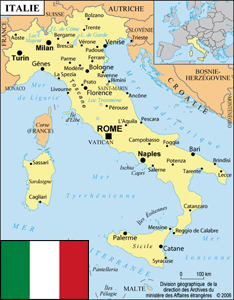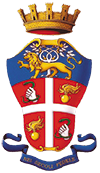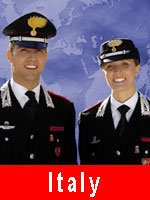
The Carabinieri Force
|
1814 Ministry of attachment: Ministère de la Défense Workforce: 104 000 General manager: Général de corps d’armée Tullio Del SETTE, Commandant général de l’Arme des Carabiniers Address: Viale Romania, 45 Information and Public Relations Service: Colonel Giuseppe BATTAGLIA, Chef du Bureau Coopération internationale Tél.: (00 39) 06 80 981 Website: www.carabinieri.it/Internet/ 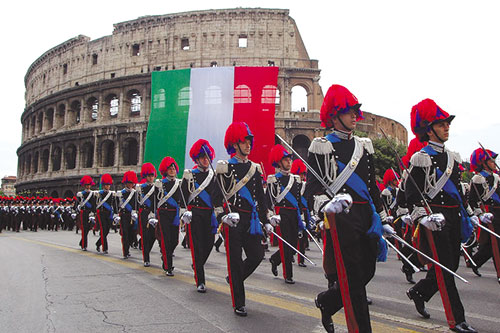
|
History
The constitution of the Italian Carabinieri dates back to a July 13th, 1814 royal decree that attributed to the "King Carabinieri Corps" the double function of State defence and the order and Public Security guardianship. Considered originally as the first corps of the Army, the Carabinieri Force maintained permanently this singular privilege within the royal Army, as the 1934 organic regulation gives evidence or the law 368/1940 which fixes the ordering of the royal Army.
The double essence of the institution, military Corps with special ordering, strengthened in time, as the 1922 regulation gives evidence by defining the Carabinieri Force as a "Permanent Public Security Armed Force", anticipating a formulation taken up again in the law 121/1981, which reorganizes the Public Security administration in Italy.
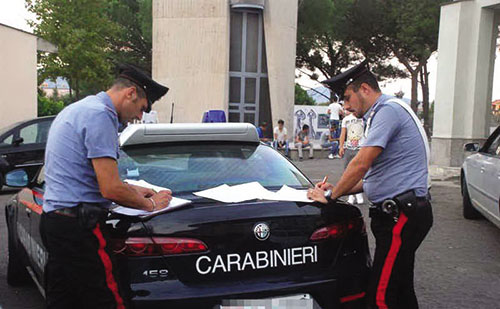
The modern society evolutions and the recognition of the historic role played by the Carabinieri in the history led the Italian legislator, through the Law n° 78 of March 31st, 2000, to attribute to this Force the rank of Armed Force directly placed under the command of the Defence Chief of Staff whose military competences are clearly defined.
Organization
Central organization
A general command, based on a general staff, composed of six different departments: Staffs, Operation, Telematics, Logistic, External relations/communication & budget/control.
Territorial organization
A territorial organisation made up of 80% of the Force and including: 5 interregional commands (Under Army Corps generals’ command), 19 regional commands (Major General/Brigadier’s level), 102 provincial commands (varying from Brigadier to lieutenant-colonel’s level, according to the importance), 539 companies and 53 "lieutenancies" as well as a network of 4621 brigades allowing an excellent territorial networking. Specialized operational units keep up their support to the territorial organization in the intervention domains ("Calabria" Operational Group, "Sardinia Hunter" helicopter squadron, and in specialized technics (Dog Unit, Scuba divers, Nautical Units).
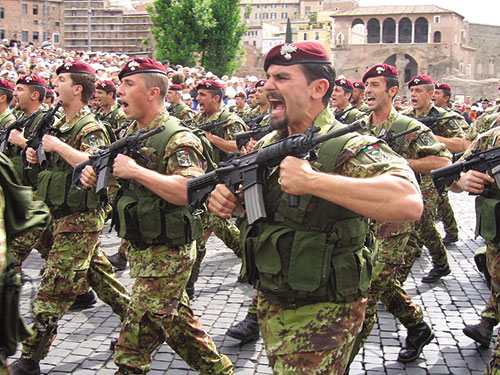
Specialized Formations
• The Specialized and Mobiles Unites Command: under the command of a Lieutenant-General, this important unit which Head Office is located in Rome, includes: The Mobile Units Division (2 brigades), the specialized Units Division (9 commands covering the fields of Air mobility, the Scientific police, the Italy Bank protection, the cultural heritage conservation, the agricultural and food policies, the health, the work, the environment and the counterfeit money), The Special Operation Group (Criminal investigations related to organized crime and to terrorism), the Ministry of Foreign Affairs Carabinieri command (Protection of the abroad Italian diplomatic and consular premises and representatives), the "Stability Police Units" Centre of excellence (Future "peacekeepers" training before further deployment abroad).
• The Command of Training School: including Senior Officers’ school in Roma, officers’ school in Florence, 7 Carabinieri non-commissioned officers’ school as well as diverse specialized centres (shooting, foreign languages, psychology, criminal investigation, sport centre, piloting, mountain ski, scuba diver, dog unit, horse riding, telematics).
• Units with specific skills: detachments operating the Italian civil service senior branches security (among which the Presidency of the Republic, the Presidency of the Council, the Two chambers, the Constitutional Court and the Revenue Court), or the Military Police within Armed Forces (Military inter force commands, Defence central units).
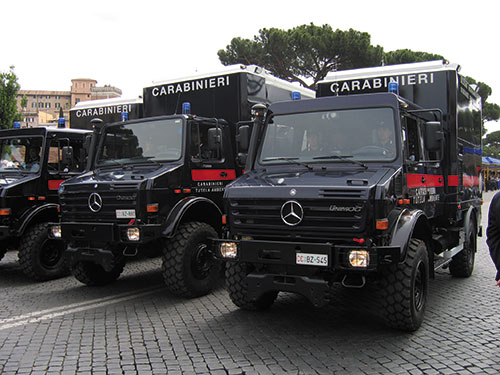
Missions
At the same time Military Force and Police Force with general competence, the Carabinieri Force performs its missions in this double area of competence:
Military missions:
• Contributing to the defence of the Homeland and the protection of Institutions;
• Participation in military operation in Italy and outside, and in military police missions abroad;
• Exclusive exercise of the Armed Force military police and security functions;
• Italian diplomatic and consular representations security abroad;
• Contribution to the mobilization.
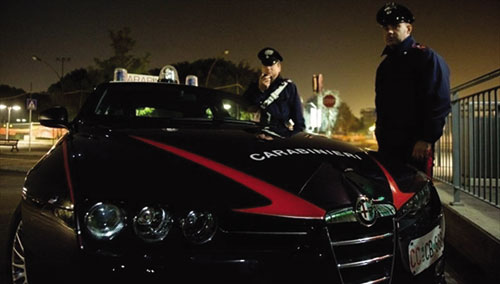
Police Missions:
• Exercise of the Criminal investigation and public security functions;
• Public Order and Security;
• Contribution to population assistance and rescue in case of disastrous event.
Staff
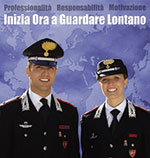 The Carabinieri Force has a statutory authorized staff of 104 000 servicemen.
The Carabinieri Force has a statutory authorized staff of 104 000 servicemen.
The senior officers are recruited on competition immediately after the High School Diploma. After coming through a two-year academic and military training in the Modena Military Academy, they join the Carabinieri Senior Officer’s School in Rome where they are achieving a three-year university course that brings them at the Master II level in Legal Sciences.
The Carabinieri Force has also an officers’ School in Florence that recruits on competition the future middle management structure for the Force supervision. 70% are recruited in civilian life at the High School diploma level before attending the three-year course, which brings them, at the Bachelor’s degree level. The remaining 30% come for internal recruitment and make only a one-year training. The whole is named “Maresciallo”, first rank for the non-commissioned officers, at the end of schooling.
The carabiniers pupils are recruited on competition among the volunteers having performed at least one year of service in Armed Forces. They carry out a one-year initial training course in one of the 7 Carabinieri schools spread over the whole national territory.
Main equipment
• Armament: Beretta 92 FS pistol, Beretta PM 12 S2 submachine gun, Beretta 70/90 shotgun, Light machine gun FN Minimi, HK MP5 Submachine gun, Franchi SPAS 15 MIL shotgun, Mauser 66 SP rifle, Accuracy International AWP shotgun.
• Vehicles: Approximately 29 000 vehicles principally composed of Fiat Bravo, Alpha Romeo 159, Land Rover Defender 90 & Land Rover Discovery - Motorcycles: BMW R 1100 RTP, BMW R 85 T, BMW F 650 G2 - Armoured vehicles: VM 90 P, Iveco RG 12.
• Air power: helicopters: 24 A 109 A, 32 AB 412, 1 airplane Piaggio P 180.
• Nautical means: 170 open sea sailing boats (classes 800 700/ 600/ 500) and coastal boats (classes 200 & 100).
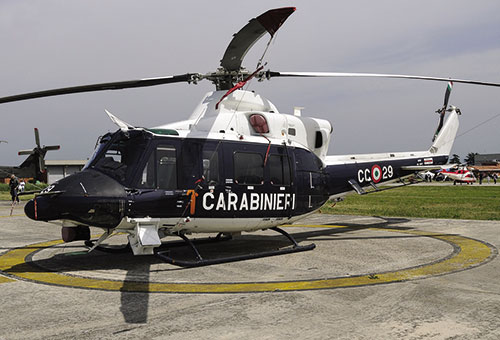
Cooperation
Exchanges existing and maintained with the main Force of Gendarmerie type, in particular the French National Gendarmerie, the Spanish Guardia Civil, the Portuguese National Republican Guard, the Nederland Royal ‘Maréchaussée’ and the Romanian Gendarmerie.

© The iconography was provided by the concerned gendarmeries

